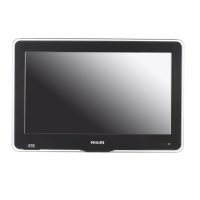
Do you have a question about the Philips 32HFL5850D/10 and is the answer not in the manual?
| Screen Size | 32 inches |
|---|---|
| Display Technology | LCD |
| Backlight Type | LED |
| HDMI Ports | 3 |
| USB Ports | 2 |
| Smart TV | Yes |
| Ethernet Port | Yes |
| Wi-Fi | Yes |
| Refresh Rate | 60 Hz |
| Energy Class | A+ |
| Audio Output | 20 W |
| Operating System | Android |
| Resolution | 1920 x 1080 (Full HD) |
Provides detailed technical parameters and model information.
Details all input/output connectors and pin assignments for the TV.
Lists and describes rear panel connections like SCART, AV.
Details side panel connections like USB, Mini Jack, Cinch.
Outlines essential safety regulations for servicing and repair.
Lists critical warnings regarding ESD, high voltage, and tools.
Emphasizes electrical shock avoidance and voltage respect.
Provides instructions for disassembling the ME8 styling for specific models.
Procedure for disassembling and removing the LCD panel.
Explains how to use test points and IC test patterns for diagnostics.
Introduces Service Default Mode (SDM), SAM, and CSM for technicians.
Explains the purpose and activation of SDM for pre-defined settings.
Details purpose, activation, and contents of SAM for alignments and options.
Explains CSM purpose, activation, and content for customer support.
Describes stepwise start-up procedures for protections detected by software.
Introduces ComPair and LVDS Tool for service and diagnostics.
Details ComPair's capabilities for repair, diagnostics, and software upgrade.
Explains error code buffer, types of errors, and their relation to protection.
Describes how the error buffer stores detected errors and their significance.
Explains methods to read error codes via SAM, blinking LED, or ComPair.
Details methods for clearing the error buffer, including SAM commands.
Explains the procedure for blinking LED error codes in protection or on states.
Details how LED blinking indicates protection errors or error buffer contents.
Guides on activating the blinking LED procedure using SDM, CSM, or RC commands.
Covers software and hardware protections, including supply errors.
Explains software-based protections, including supply monitoring.
Details the hardware protection circuit for audio problems.
Provides tips for fault finding and troubleshooting common issues.
Explains how to find failures in DC-DC converters and common symptoms.
Provides a flowchart for exchanging the Small Signal Board (SSB).
Emphasizes checking the display option code in SAM after SSB replacement.
Introduces software upgrading via USB or PCI bus.
Explains software storage in NAND Flash and upgrade methods.
Details the format and content of the One-Zip software file for upgrades.
Describes methods for upgrading the stand-by software via USB or PC.
Lists general conditions required for performing electrical alignments.
Explains how to perform software alignments via SAM.
Guides on aligning the white point using SAM and test signals.
Explains microprocessor communication with I2C ICs and option codes.
Details how the microprocessor communicates with I2C ICs via option codes.
Guides on setting all options at once using option numbers.
Explains the importance of resetting the NVM on a repaired SSB.
Describes the power supply units used in the TV522 platform.
Presents a block diagram illustrating the video signal path and components.
Shows a block diagram detailing the audio signal flow and related components.
Illustrates the control and clock signal paths within the TV system.
Provides an overview of test points on the top side of the SSB.
Shows the physical layout of test points on Part 1 of the SSB top side.
Illustrates the physical layout of test points on Part 2 of the SSB top side.
Lists test points for Part 1 of the SSB bottom side.
Lists test points for Part 2 of the SSB bottom side.

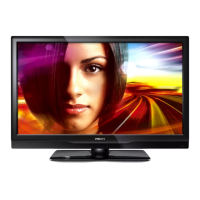
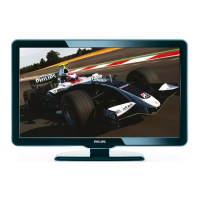
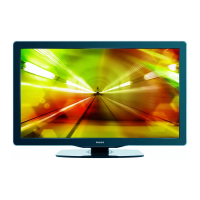
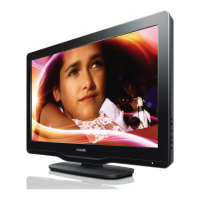




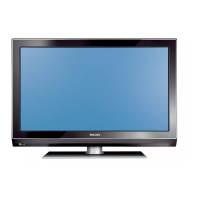

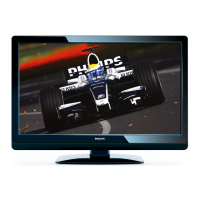
